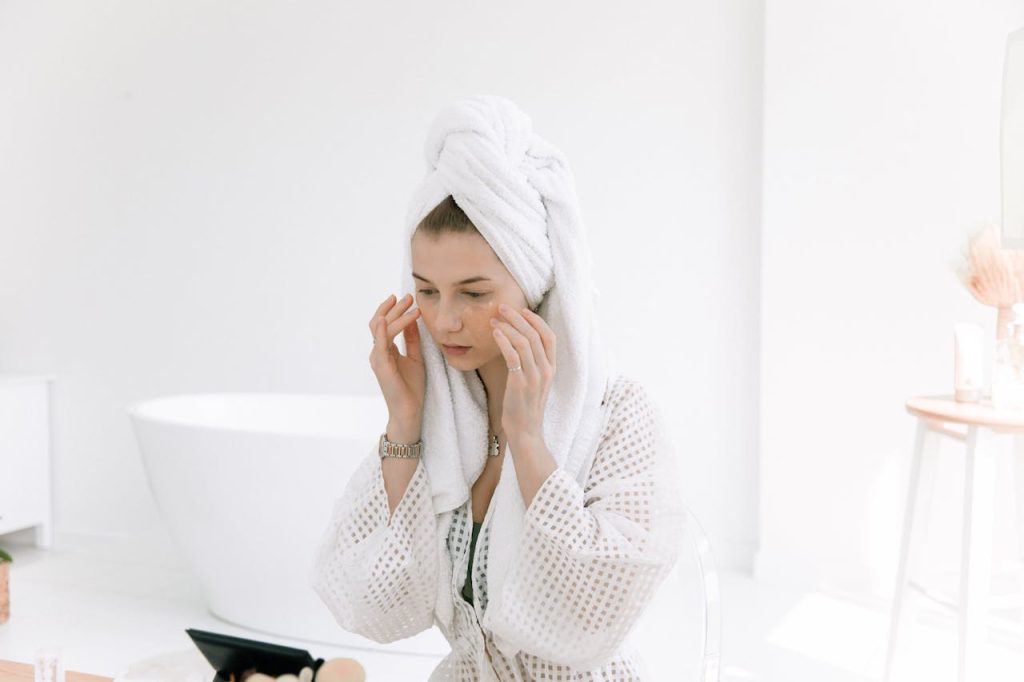Face sculpting devices have gained popularity in recent years as a non-invasive way to improve facial contours and promote a youthful appearance. These tools, including Liftlab’s anti-aging led light face sculptor, use various technologies to stimulate collagen production and enhance skin tone. For optimal results, most experts recommend using a face sculptor 3-5 times per week, with each session lasting 5-10 minutes.
Consistency is key when incorporating a face sculptor into your skincare routine. Regular use allows the device to work gradually, producing natural-looking results over time. Some users may notice immediate effects after a single session, such as improved circulation and a temporary lifting effect. However, long-term benefits typically become more apparent after 4-6 weeks of consistent use.
It’s important to follow the manufacturer’s instructions for your specific device. Overuse can potentially irritate the skin or diminish the effectiveness of the treatment. Always start with clean, moisturized skin and use gentle, upward motions when applying the face sculptor to avoid pulling or tugging on delicate facial tissues.
Key Takeaways
- Use a face sculptor 3-5 times weekly for 5-10 minutes per session
- Consistent use over 4-6 weeks yields the most noticeable results
- Follow manufacturer instructions to avoid skin irritation and maximize benefits
Understanding Face Sculpting
Face sculpting involves techniques and treatments that enhance facial contours and address signs of aging. It focuses on stimulating collagen production and improving skin elasticity for a more youthful appearance.
The Role of Collagen in Facial Sculpting
Collagen is a vital protein that provides structure and support to the skin. As we age, collagen production decreases, leading to wrinkles and sagging skin.
Face sculpting treatments aim to boost collagen production, helping to restore skin firmness and elasticity. This process can reduce the appearance of fine lines and improve overall facial contours.
Many sculpting techniques stimulate fibroblasts, the cells responsible for producing collagen. This stimulation can lead to gradual improvements in skin texture and tone over time.
Overview of Biostimulatory Fillers
Biostimulatory fillers are injectable treatments that stimulate the body’s natural collagen production. Unlike traditional dermal fillers, they work by triggering the skin’s regenerative processes.
These fillers typically contain substances like poly-L-lactic acid or calcium hydroxylapatite. When injected, they create a scaffolding effect in the skin, promoting collagen growth.
Results from biostimulatory fillers develop gradually over several months as new collagen forms. This process can lead to more natural-looking and longer-lasting improvements in skin quality and facial volume.
Optimizing Face Sculptor Usage
Proper technique and frequency are crucial for maximizing the benefits of face sculptor tools. These devices can help improve facial contours and skin appearance when used correctly.
Establishing a Treatment Frequency
Most experts recommend using face sculptor tools 3-5 times per week for optimal results. Start with 2-3 sessions weekly and gradually increase as your skin adjusts. Each session should last 5-10 minutes, focusing on problem areas like the jawline, cheekbones, and forehead. Consistency is key – maintain a regular schedule to see noticeable improvements.
For those using devices with microcurrent technology, like NuFace, daily use may be recommended initially. After achieving desired results, reduce to 2-3 times weekly for maintenance. Always follow the manufacturer’s guidelines for your specific device.
Avoid overuse, as this can irritate the skin or cause muscle fatigue. Allow at least 24 hours between sessions to let facial muscles recover.
Managing Expectations for Results
Results from face sculptor tools are gradual and cumulative. Most users notice initial improvements in skin tone and facial contours within 4-6 weeks of consistent use. More significant changes in fine lines, wrinkles, and overall facial structure may take 2-3 months to become apparent.
Factors affecting results include:
- Age and skin condition
- Consistency of use
- Proper technique
- Quality of the device
Remember, face sculptors complement rather than replace a good skincare routine. Combine tool use with appropriate cleansing, moisturizing, and sun protection for best results.
Potential Risks and How to Mitigate Them
While generally safe, face sculptor tools can pose some risks if used improperly:
- Skin irritation: Use gentle pressure and avoid sensitive areas.
- Bruising: Start with light pressure, increasing gradually.
- Muscle soreness: Limit session duration and frequency.
- Broken capillaries: Avoid dragging the tool across the skin.
To minimize risks:
- Clean the tool before each use
- Apply a facial oil or serum for smooth gliding
- Follow the manufacturer’s instructions carefully
- Stop use if skin becomes red, irritated, or painful
People with certain skin conditions, recent facial surgeries, or active acne should consult a dermatologist before using face sculptors.
Long-Term Care and Maintenance
For sustained benefits, incorporate face sculptor use into your long-term skincare routine. After achieving initial results, maintain with 2-3 sessions weekly. Adjust frequency based on your skin’s response and needs.
Keep your device clean and sanitized to prevent bacterial growth. Replace heads or attachments as recommended by the manufacturer, typically every 6-12 months.
Combine face sculptor use with a comprehensive skincare regimen:
- Daily cleansing and moisturizing
- Regular exfoliation
- Sun protection
- Hydrating masks or treatments
As skin ages, you may need to increase session frequency or duration. Pay attention to your skin’s changing needs and adjust your routine accordingly.
Conclusion
Face sculptors can provide effective facial rejuvenation when used appropriately. The frequency of treatments depends on individual factors like age, skin condition, and desired results. Most providers recommend 2-4 initial sessions spaced 4-6 weeks apart, followed by maintenance treatments every 1-2 years. Consulting a qualified professional is crucial for developing a personalized treatment plan that maximizes benefits while ensuring safety.

